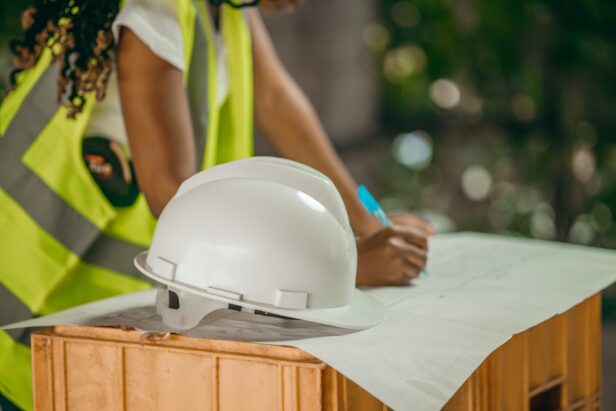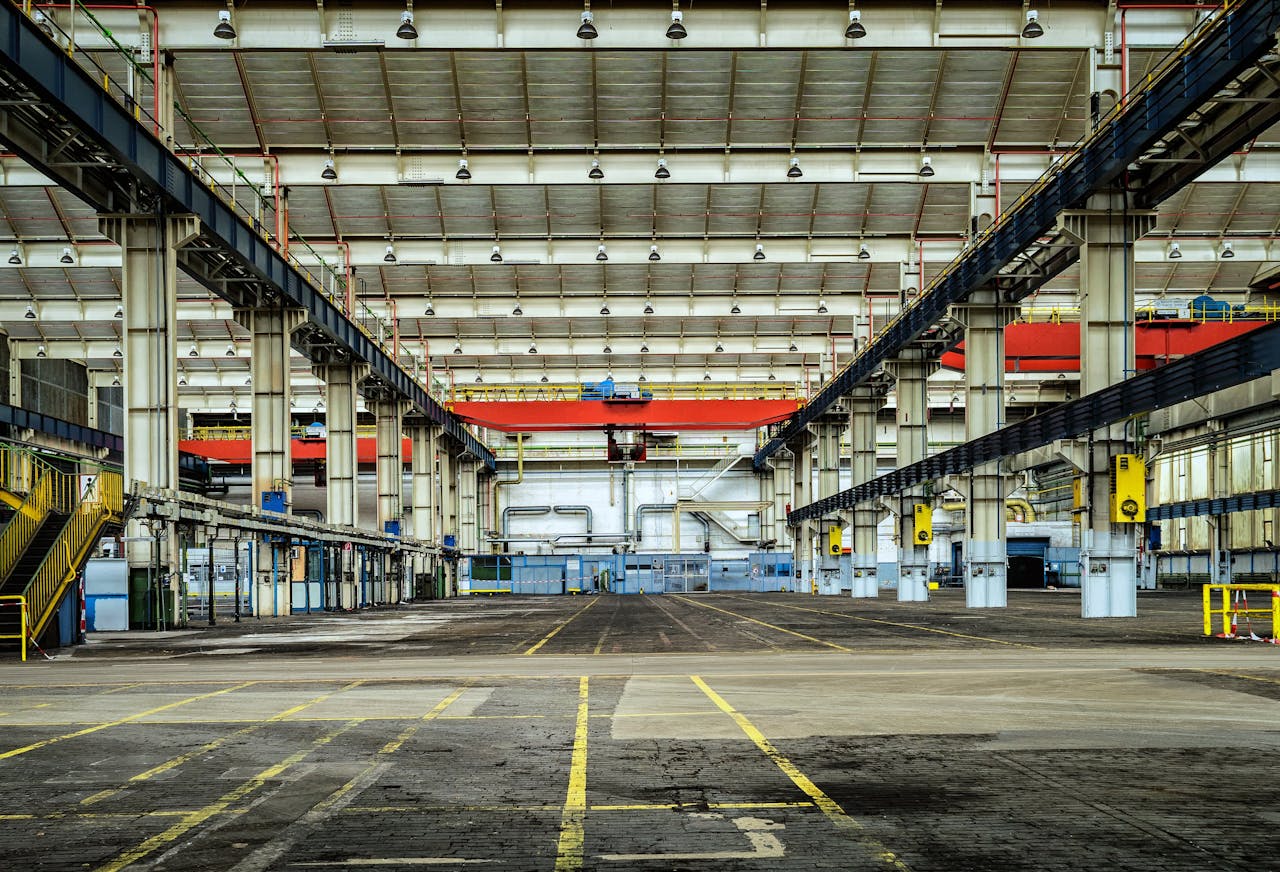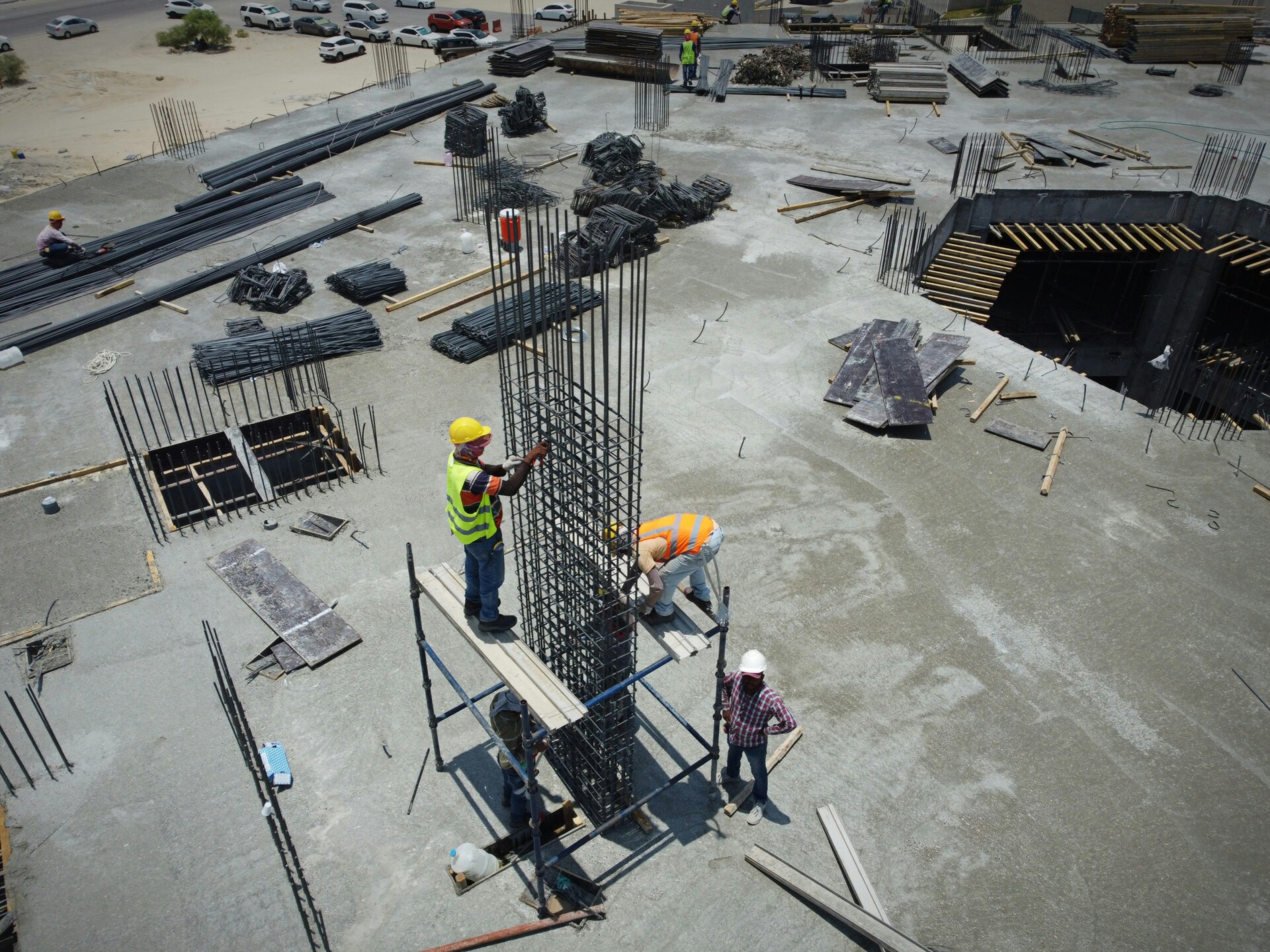Every workday in construction begins with calculated risk. In 2022, the industry recorded 1,056 worker fatalities, reflecting an 11 percent increase from the previous year. Falls, slips, and trips accounted for 423 of these deaths alone.
Health and safety regulations in construction establish the foundational framework that keeps workers alive and projects moving forward. These rules address the industry’s most dangerous hazards while creating standardized approaches to workplace hazards, falls, electrocutions, and chemical exposure across all construction sites nationwide.
Who Sets And Enforces These Rules In The U.S.?

The Occupational Safety and Health Administration (OSHA) serves as the primary federal agency responsible for setting and enforcing construction safety standards across the United States. Operating under the Department of Labor, OSHA develops comprehensive regulations that cover private sector construction sites nationwide. The agency conducts workplace inspections, investigates safety violations, and issues financial penalties to employers who fail to meet established standards.
OSHA’s enforcement approach combines proactive inspections with reactive responses to workplace incidents. Compliance officers visit construction sites to examine working conditions, review safety protocols, and identify potential hazards. When violations occur, we see penalties ranging from modest fines for minor infractions to substantial financial consequences for willful or repeated safety breaches.
Federal OSHA’s Core Responsibilities
Beyond enforcement, OSHA provides extensive training and education resources for construction professionals. The agency offers outreach programs, develops safety guidelines, and maintains detailed standards that address specific construction hazards. These educational initiatives help contractors understand regulatory requirements and implement effective safety programs on their job sites.
OSHA also investigates workplace fatalities and serious injuries, using these incidents to identify systemic safety issues and prevent similar occurrences. The agency’s fatality inspection program requires immediate notification and comprehensive investigation when construction workers suffer fatal injuries.
State-Level Safety Enforcement
While federal OSHA provides the foundation for construction safety regulation, individual states can implement their own occupational safety programs. Twenty-two states currently operate OSHA-approved state plans that cover both private sector and government workers. These state programs must meet or exceed federal OSHA standards while addressing region-specific safety concerns.
Cal/OSHA exemplifies how states can strengthen federal requirements through more stringent regulations. California’s program includes unique standards for heat exposure, repetitive motion injuries, and workplace violence prevention that go beyond federal minimums. The state also exercises expanded enforcement authority, including enterprise-wide violations that can affect multiple worksites under a single employer.
Dual Compliance Requirements
Construction contractors must navigate both federal and state regulations depending on their project locations. In states with approved plans, we follow state-specific standards and enforcement procedures. In states without approved plans, federal OSHA maintains direct jurisdiction over private sector construction sites.
This dual system means contractors working across state lines face varying regulatory landscapes. A company operating in both federal OSHA states and Cal/OSHA territory must comply with different heat illness prevention protocols, training requirements, and penalty structures. Understanding these jurisdictional differences becomes essential for maintaining consistent safety programs across multiple project locations.
What OSHA Standards Should Every Site Plan For?
When we plan construction projects, certain OSHA standards form the backbone of every site safety strategy. These requirements divide into two categories: general safety program elements and specific hazard protections.
OSHA’s general requirements establish the foundation for construction site safety. We build comprehensive safety and health programs that identify risks before work begins. Worker training programs teach crews to recognize hazards like unstable surfaces, exposed electrical components, and chemical dangers.
Personal protective equipment policies ensure hard hats, safety glasses, gloves, and respiratory protection reach workers at no cost. We maintain tools and equipment through regular inspections and immediate repairs. Emergency procedures and first-aid protocols prepare teams for medical situations and site evacuations.
Critical Hazard-Specific Standards
Fall protection standards apply when work occurs six feet or higher above lower levels. OSHA requires guardrails, safety nets, or personal fall arrest systems depending on the work scenario. Personal fall arrest equipment includes full-body harnesses, lanyards, and anchor points rated for specific loads.
Scaffolding requirements mandate stable design and proper assembly procedures. We ensure scaffolds support at least four times the intended load and include guardrails for platforms over ten feet high. Competent persons inspect scaffolds before each shift and after weather events that could affect stability.
Electrical safety standards protect against electrocution through proper grounding, circuit protection, and isolation procedures. Ground-fault circuit interrupters prevent electrical shock in wet conditions. Lockout/tagout procedures de-energize equipment during maintenance and repair work.
Excavation And Communication Requirements
Excavation and trenching standards protect against cave-ins through protective systems like sloping, shoring, or trench boxes. Trenches five feet deep or more require these protective measures. Safe egress points every 25 feet allow quick escape during emergencies.
Hazard communication programs inform workers about chemical exposures through labels, safety data sheets, and training sessions. We maintain current safety data sheets for all hazardous materials on site. Chemical containers require proper labeling that identifies contents and hazard warnings.
| Standard | Key Aspect | Description |
| 29 CFR 1926.501 | Fall Protection | Requires employers to provide fall protection systems for workers at heights of six feet or more. |
| 29 CFR 1926 Subpart L | Scaffolding | Specifies design, construction, use, and employee training requirements for scaffolds to ensure safety and stability. |
| 29 CFR 1926 Subpart K | Electrical Safety | Addresses safe electrical installation, including wiring methods, equipment, and protective measures against shock. |
| 29 CFR 1926 Subpart E | Personal Protective Equipment | Mandates the provision and correct use of PPE, such as hard hats, gloves, and eye protection, to safeguard workers. |
| 29 CFR 1926 Subpart P | Excavation and Trenching | Requires protective systems for trenches five feet or deeper to prevent cave-ins, with inspection by a competent person. |
| Hazard Communication | 29 CFR 1926.59 | Ensures that workers are informed about hazardous chemicals through training, labeling, and Safety Data Sheets. |
These standards work together to create layered protection against construction’s most dangerous risks. Regular safety meetings reinforce these requirements and address site-specific conditions that may require additional precautions.
What Other Standards And State Rules Should Teams Follow?

State-specific construction safety regulations extend beyond federal OSHA requirements. We navigate multiple jurisdictions where local authorities tailor safety requirements to regional hazards. California addresses earthquake risks through Cal/OSHA’s enhanced standards, while Florida incorporates hurricane-specific protocols into construction regulations. Teams must verify both federal baseline requirements and any additional state mandates before breaking ground.
States may implement more stringent fall protection requirements, demand enhanced electrical safety measures, or require specialized training for regional environmental hazards. We track these variations across project locations to ensure full compliance. Construction feasibility depends partly on understanding which local codes supplement federal standards and how they affect scheduling and resource allocation.
ANSI/ASSE Best Practice Standards
The American National Standards Institute and American Society of Safety Engineers develop voluntary standards that strengthen baseline safety practices. We reference ANSI/ASSE standards for machine guarding protocols, advanced fall protection systems, and personal protective equipment specifications that exceed federal minimums. These standards become mandatory when states adopt them into local codes or when we incorporate them into project specifications.
ANSI/ASSE standards address gaps in federal regulations through detailed technical guidance. Machine guarding standards specify protective barriers for construction equipment, while fall protection guidelines provide engineering calculations for complex anchor systems. We use these standards to develop site-specific safety protocols that anticipate hazards federal regulations may not fully address.
NFPA Fire Safety And Electrical Standards
National Fire Protection Association standards govern fire prevention, electrical installations, and flammable materials handling on construction sites. We follow NFPA standards for temporary electrical systems, welding operations, and storage of combustible materials. Local building codes frequently require NFPA compliance, making these voluntary standards effectively mandatory for many projects.
NFPA standards establish protocols for hot work permits, fire watch procedures, and emergency response planning. We coordinate with local fire marshals to ensure NFPA-compliant fire prevention systems during construction phases. Flammable materials storage follows NFPA guidelines for separation distances, ventilation requirements, and container specifications to prevent ignition sources from creating site hazards.
Coordinating Federal And Local Requirements
We verify applicable standards through systematic reviews of federal OSHA requirements, state regulations, and local building codes before mobilizing crews. This process identifies where state standards exceed federal minimums and where local codes reference specific NFPA or ANSI standards. Teams receive briefings on jurisdiction-specific requirements that affect daily operations and safety procedures.
Construction compliance requires monitoring regulatory updates from multiple sources. We track changes to state safety regulations, updates to local codes, and revisions to voluntary standards that may become mandatory through adoption. This coordination ensures we maintain compliance across different regulatory environments while avoiding conflicting requirements that could compromise safety or delay progress.
How Do These Regulations Affect Sites Today, And What Challenges Remain?
Construction safety regulations have transformed the industry over the past decades. Accident rates have declined substantially. Training programs now reach more workers than ever before. These regulations create measurable improvements in working conditions across construction sites nationwide.
We see the impact daily in how crews approach hazardous tasks. Workers wear proper PPE consistently. Fall protection systems are standard on elevated work. Emergency response procedures are clearly defined and practiced regularly.
Real Progress In Safety Outcomes
Training and education remain central to these safety gains. Workers who understand hazards make better decisions. Regular safety meetings reinforce proper procedures. Certification programs ensure crews know current standards and best practices.
Modern construction sites operate with safety protocols that were uncommon just twenty years ago. Daily safety briefings start each shift. Hazard identification becomes routine. Equipment inspections happen before use, not after incidents.
Persistent Compliance Challenges
Complex regulations strain smaller construction firms disproportionately. These companies often lack dedicated safety personnel. Understanding multilayered requirements demands time and expertise that smaller operations struggle to maintain.
Changing site conditions complicate compliance efforts. Weather, schedule pressures, and evolving project scopes create situations not covered in standard procedures. We adapt our safety protocols constantly to address these real-world variables.
Inspector capacity limits effective enforcement across all sites. OSHA and state agencies cannot visit every project. This reality places greater responsibility on contractors to self-monitor and maintain standards without external oversight.
Some penalties may not adequately deter large violators. Companies with significant resources might view fines as business costs rather than meaningful consequences. This creates an uneven playing field where compliance becomes optional for some players.
Technology And Training Innovations
New technologies reshape how we approach construction safety. Wearables monitor worker vital signs and environmental conditions. These devices alert supervisors to heat stress, falls, or hazardous exposures in real time.
Drones conduct site inspections in dangerous areas. They identify potential hazards without putting workers at risk. Aerial surveys reveal problems that ground-level inspections might miss.
Virtual reality training creates immersive learning experiences. Workers practice emergency responses in controlled environments. VR simulations replicate dangerous scenarios without actual risk, improving reaction times and decision-making skills.
Future Regulatory Developments
Proposed changes include stricter penalties for repeat violators. Enhanced whistleblower protections encourage workers to report unsafe conditions. More training requirements ensure workers stay current with evolving standards.
Increased OSHA funding could expand inspection capacity and enforcement capabilities. These resources would allow more frequent site visits and faster response to complaints.
Industry associations push for updated standards that reflect modern construction methods. New materials and techniques require fresh safety approaches that current regulations may not address adequately.
Shared responsibility remains key to achieving safer construction sites. Employers must invest in proper training and equipment. Workers need to follow established procedures and speak up about hazards. Associations should promote best practices beyond minimum requirements. Regulators must balance enforcement with practical implementation guidance.
Conclusion and Next Steps

Health and safety regulations in construction provide a proven framework for protecting workers and reducing risks on job sites. These regulations work because they address real hazards that have caused serious injuries and fatalities across the industry. When we follow OSHA standards, implement state requirements, and maintain consistent safety practices, we create environments where crews can focus on quality work rather than avoiding preventable dangers.
Building effective safety programs requires commitment to several core practices. We maintain current training for all personnel, ensuring everyone understands site-specific hazards and proper procedures. Personal protective equipment must be available, properly maintained, and consistently used. Equipment inspections and maintenance schedules keep machinery operating safely. Clear hazard communication protects workers from chemical exposures and other dangers. Emergency response plans prepare teams for the unexpected. These fundamentals form the backbone of every successful construction safety program.
Ready to strengthen your construction safety compliance? Contact EB3 Construction to discuss how we integrate comprehensive safety protocols into every project we manage.




